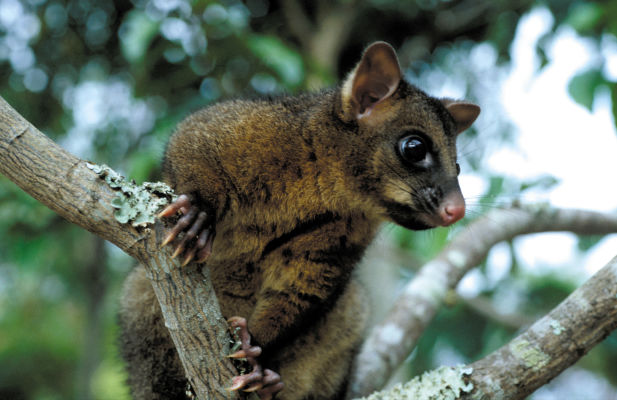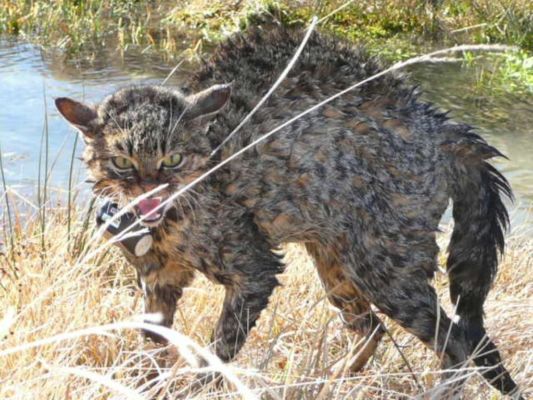Jan Wright, Parliamentary Commissioner for the Environment, has written a comprehensive assessment of the current state of New Zealand’s birds – a taonga of our nation – and has made a number of recommendations for what needs to be done about the issues we face.
“Of our 168 native bird species, just 20% are doing OK, 48% are in some trouble, and 32% are in serious trouble. Many birds are in small isolated populations”.

Predators are the biggest problem and the Commissioner has identified her ‘Most Wanted’:
“Today, it is clear that the most critical requirement for many native birds to thrive on the mainland is safety from predators. There are many animals that kill native birds, but there are three that consistently feature on the ‘most wanted’ list – possums, rats, and stoats.”
The statistics are grim:
• Over 30 million possums in New Zealand today;
• Ship rats begin to breed when only three or four months old and will produce a litter once a month if enough food is available;
• Male stoats visit the nest soon after the young are born and mate with the tiny female kits as well as with the mother… If food is plentiful, a single female can produce as many as 12 kits.
Cats and dogs are a serious problem too:
• Companion cats number more than a million – about half of New Zealand households have a pet cat;
• The number of birds killed by domestic cats has been estimated at between 5 and 11 million a year;
• It has been estimated that there are nearly 200,000 stray cats across the country;
• It is widely thought that there are now many millions of feral cats in New Zealand. They are formidable killers;
• One Stewart Island study found the range of female feral cats to be over a 1,000 hectares, and that of male feral cats to be almost twice as large;
• In 1987 a single German shepherd abandoned in a Northland forest was found to have killed at least 13 kiwi and likely many more;
• In Northland, dogs are now the main killers of adult kiwi.

These issues and others are meticulously investigated in the Commissioner’s report and the challenges we face in combating those problems are clearly outlined. The report ends with seven recommendations for what we can – indeed must – start doing about it. And we need to start now.
The picture isn’t pretty and the clock is ticking. So what are the PCE’s recommendations?
Recommendation 1: “We need to start a plan for Predator Free 2050.”
With the Government’s announcement last year of PF2050, we’ve got a clear goal. We’re on a journey to save our birdlife – so where’s the road map? Who knows where we’re going, what we need to be doing and who is responsible for what? Not in 2050 – but today. The public of New Zealand are keen to climb on board – but the PF2050 bus needs a driver, a navigator, a map and an itinerary.
As the PCE report states: “The Government’s announcement of the Predator Free 2050 goal has been rightly lauded as a big step forward. It is ambitious and inspiring, and has attracted attention around the world. While the business case prepared in support of the goal is an excellent starting point, it is not a plan of action – it provides little detail of how we are to get there from here. And this is what is now needed.”
So how do you plan for something 33 years away that requires techniques and technology that we’re still trying to invent? The answer, according to Commissioner Jan Wright is that you don’t. You start planning for today and tomorrow and what we can actually do right now.
“Trying to prepare a detailed plan stretching out to 2050 would be unwise. Rather, the plan should be a living document that can be frequently edited and updated. The starting point should be geographic – developing a portfolio of areas in different parts of the country where it makes sense to focus efforts on clearing predators.”
The report outlines criteria for choosing those initial, high-priority areas including:
1. Choose areas rich in different wildlife, particularly where the deep endemic birds (those of unique, ancient lineage), can still be found.
2. It’s not just about predators – are there other issues in a particular area that stop wildlife thriving – eg goats, wasps?
3. Mix it up – “The areas chosen should be in different regions of New Zealand, include different ecosystems, and not be restricted to the conservation estate.”
4. Supersize me – “Committing to clearing predators from large areas is important. Large safe areas can support more abundant wildlife… [and] support larger populations of any species, thus maintaining greater genetic diversity.”
5. Pick somewhere defensible – like peninsulas.
6. Plan to ‘join the dots’ – “The potential for connecting different areas through wildlife corridors should be considered.”
7. Seek local support – “The support of local communities for restoring natural heritage – and for the methods used to kill predators – may be an important factor.”
So back to that road map – we’ve located some priority locations for the early part of the journey. What else do we need to plan?
Everyone has a role to play, but someone needs to lead the team.
“Another dimension of a plan for Predator Free 2050 would need to be coordination with other initiatives to restore natural heritage… A Crown entity – Predator Free 2050 Ltd – has been created, but it is not evident how this organisation will interact with the Department of Conservation and the great range of different players, all with different mandates and priorities…”
“Clarity will be needed on what needs to be done in targeted areas, and on who is responsible for what… Maintenance of suppression is vital. Without commitment to ongoing control of predators, it may not be worth beginning to clear them from some areas. Then there are questions of resources. Where does funding come from and how can it be optimally spent? Finally, there must be some way of assessing progress.”
Based on all these considerations, the PCE’s first recommendation to Government is:
“I recommend that the Minister for the Environment and the Minister of Conservation direct officials to establish an expert committee to advise on a portfolio of large priority areas for sustained and effective predator control that will allow birds and other native wildlife to thrive.”

